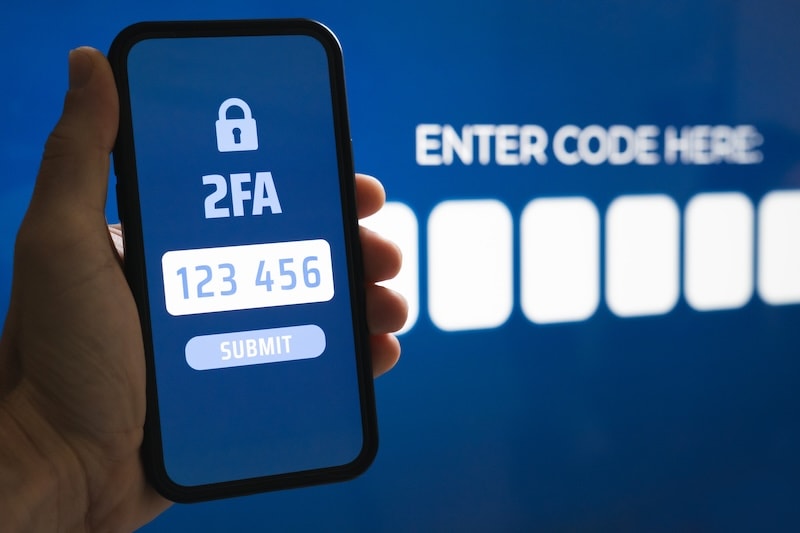This article about executive personal information privacy discusses how sensitive information can end up in the wrong hands, putting execs and their companies in danger of a data breach, identity theft or worse.
Due to their visible profile, high net worth, and ability to access their company’s network infrastructure and sensitive data, executives have a heightened risk of everything from identity theft to in-person violence.
There are many consequences of leaked personal information, including:
- Monetary and financial data loss
- Unacceptable risks to personal safety
- Reputational damage
Online reputation management (ORM) and protecting sensitive data are connected because ORM tactics can help executives stay private and safe online. There are a number of ways that ORM teams can keep an executive’s sensitive information protected on the internet, including:
- Removing personally identifiable information from people-search databases
- Searching for personal financial data, personal health data or other sensitive personal information online and requesting that it be removed from data brokerages and Google search results
- Advising clients on how to build an online reputation without sharing personal identifiers or sensitive personal data.
In this article, we’ll discuss the importance of protecting your sensitive information, real-world risks executives and companies safe, and tips for staying safe online and offline.
To speak with a personal data expert about how to keep your sensitive information safe online, call us today at 844-461-3632 or fill out the contact form below.
Request a Free Consultation
Privacy Risks Executives Face
Executives are high-value targets for a number of reasons:
- Financial Power: Executives are often high-net-worth people, which is appealing to cybercriminals who are looking to gain financially.
- High Visibility: It’s easier for cybercriminals or an identity thief to target high-profile executives since they’re so public to begin with. Also, having such a high amount of visibility means that executives are more vulnerable to criticism, impersonation and scrutinization.
- Top-Tier Access: Since executives typically have access to highly sensitive company information, hackers will target them for espionage purposes.
For these reasons (and others), executives are at greater risk when it comes to significant privacy breaches and personal safety.
Privacy Breaches
Common privacy breaches that executives face include data leaks, doxxing and social media scams. Let’s discuss these breaches and others a bit more:
- Cross-Border Breaches: International cybercrime is growing, and it’s becoming more complex to keep sensitive personal data and a company’s sensitive data out of the hands of bad actors.
- Data Leaks: When cybercriminals hack into corporate systems or third-party vendors, company information and sensitive personal data can be exposed.
- Deepfakes: With today’s advanced tech, identity theft is easier than ever. By manipulating audio or video, a threat actor can pose as an executive and expose sensitive information or ruin their professional reputation.
- Doxxing: Doxxing occurs when an executive’s private information is released online so that the public can access it. This can include addresses, phone numbers and even contact details for family members.
- Internet of Things Risks: The Internet of Things (IoT) refers to all of the computing devices we use on a regular basis. As smart devices grow in popularity and become more powerful, they create a new landscape that’s prone to attacks.
- Social Media Scams: It’s common for hackers to create fake accounts that impersonate executives to scam others and ruin the exec’s personal reputation.
According to the Privacy Governance Report 2024 from the International Association of Privacy Professionals (IAPP), 49% of respondents said that their organizations had a data breach within the last year.
Cyber extortion attacks, which include using ransomware, are also a high priority for security teams.
Cyber Operations: Extortion and Ransomware
During a cyber extortion attack, a hacker will access a company’s information or an executive’s extremely sensitive personal data and demand money in order to stop the attack and relinquish the information.
The term “ransomware” refers to a specific type of cyber extortion attack. Ransomware is a type of malware that encrypts data. The attacker will then demand payment from the company or executive in order to decrypt the data. Basically, ransomware is a tool that’s commonly used in extortion schemes.
According to Verizon’s 2024 Data Breach Investigations Report, ransomware is on the decline, but that’s only because other types of extortion techniques are being used more frequently.
Approximately one-third of breaches include some type of extortion technique, and extortion attacks have increased over the past year. Today, 9% of breaches include some element of extortion.
As ransomware hackers have adopted other types of extortion methods, ransomware attacks have decreased to 23%. However, extortion and ransomware attacks combine to represent 32% of breaches.
Personal Safety
There are numerous personal safety risks that executives have to protect themselves against:
- Harassment and Stalking: Cybercriminals can track the movements of executives — online and in person — in order to threaten or encounter them obsessively or maliciously.
- Home Invasion: When an executive’s address is made public, burglaries, robberies and other home intrusions are more likely to occur.
- Kidnapping: Executives and their loved ones may be abducted or kidnapped. Ransom threats will then be made, often with the goal of corporate espionage or another type of corporate leverage.
- Physical Assault: Executives may be harmed physically due to a personal grudge, public controversy or workplace problem.
- Risks at Events: When an executive’s schedule of appearances is publicly known, they’re at a greater risk of violence while attending work-related events.
There’s a big overlap of cybercrimes and physical risks for executives. When personally identifiable information is leaked or misused, it can become public knowledge, which makes execs more vulnerable to in-person threats or violence.
Real-World Examples
Having so much personally identifiable information online is one of the biggest threats that executives face. Particularly concerning is the amount of detail online about an executive’s daily life, including contact information, travel plans and routines. This puts execs at a high risk of being targeted by criminals and scammers, both online and in person.
In this section, we’ll discuss real-world examples of executives who were targeted, which will illustrate the true data security risks and dangers to prepare for.
Brian Thompson: Shooting
At the top of everyone’s mind is the recent killing of UnitedHealthcare CEO Brian Thompson. The murder was seemingly motivated by hatred of corporate greed.
Thompson, who lived in Minnesota, was visiting New York for an investors’ meeting. After leaving his hotel and walking to the meeting location, he was shot from behind.
Another unfortunate outcome of this crime is that it led to “Wanted” posters showing up around Manhattan, which showed pictures of other company execs, along with a photo of Thompson that had been crossed out.
Marissa Mayer: Harassment
In 2016, Gregory Calvin King was charged with stalking after sending the CEO of Yahoo, Marissa Mayer, graphic and unwanted emails, along with over 20,000 Twitter messages that had been sent in 2010. Even after being sentenced to probation for the harassment, violating probation, and being sentenced to federal prison for one year, King continued to send Mayer messages once released.
Tuhina Singh: Doxxing
In 2020, Tuhina Singh, the CEO of Propine, a digital securities firm, was mistakenly identified as Paramjeet Kaur, a woman who had been charged with being a public nuisance and breaching safety regulations during the COVID pandemic. Singh’s personal details were posted online, along with her colleagues’ names, which led to racist comments being made against her.
Tim Cook: Stalking
In 2020, a temporary restraining order was placed against Rakesh Sharma, who had harassed multiple company executives and stalked Tim Cook, the CEO of Apple.
Sharma had left threatening messages with various company execs, at at least one of those messages claimed to know executives’ home addresses. There were also threats of gun violence.
The situation worsened when Sharma showed up at Cook’s residence in December 2019, entering through a gate while carrying champagne and flowers. The following January, Sharma showed up on Cook’s property again.
Which Industries Are at Risk?
Executives in various industries, including finance, healthcare and technology, are facing heightened threats to their professional and personal lives. The more exposed a company’s data is, the more vulnerable its executives are. However, not every industry or business is at as high a risk as others.
According to Verizon, “It all boils down to attack surfaces — the prime real estate for cyber malfeasance.” In other words, the technological infrastructure a company has and the type of data it retains influences that company’s level of risk. A major tech company that utilizes various mobile devices and apps is a better target for cybercriminals than a small business with a simple e-commerce system, for example.
Here’s what the Verizon report found in regard to specific industries and their risk levels.
Accommodation and Food Services
Accommodation and food services had 220 incidents, and about half of them resulted in data disclosure. Most threat actors were external, and 100% of the threats were financially motivated.
Retail
While the retail industry only experienced 725 incidents, about half of them resulted in data disclosure. Most threat actors were external (96%), and financial motivations were responsible for 99% of attacks. While payment data has often been the focus of cybercrimes in this industry, it’s now shifting to credentials.
Information
This industry experienced 1,367 reported incidents, with 79% of threat actors being external. Espionage made up 14% of threat actor motives, with financial motives making up the remainder. Ransomware and the use of stolen credentials are the main data security risks in this industry.
Healthcare
Healthcare had 1,378 incidents, with 70% of threat actors being internal and the remaining 30% being external. Financial motives were the most common, representing 98% of incidents. Sensitive personal data was the most at risk, even more so than medical records and personal health data.
Education
Educational services had 1,780 incidents, and almost all of them resulted in data disclosure. A majority of threat actors were external, but 32% were internal, and almost all of the motives were financial, with just 2% represented by espionage. Internal errors also accounted for a good number of incidents.
Manufacturing
While manufacturing companies reported 2,305 incidents, less than 900 of them resulted in data disclosure. External and internal breaches were split 73% to 27%, accordingly, with most motives being financial. This industry has also experienced an increase in error-related security breaches.
Professional, Scientific and Technical
These service industries experienced 2,599 incidents, and 1,314 had data disclosures. Most breaches involved errors, social engineering, and system intrusions, and three-quarters of threat actors were external. Credentials and sensitive personal data remain at the highest risk of breaches in this industry.
Finance and Insurance
As you can imagine, financial and insurance companies had a lot of incidents at 3,348, with over 1,000 of them resulting in data disclosure. There were both external (69%) and internal (31%) breaches, with 95% of the motives being financial and the remaining motives being espionage. In this industry, more complex attacks are trending, and ransomware attacks are still a major threat.
Public Administration
This industry far outpaced others in terms of incidents, with 12,217 reported and over 1,000 resulting in data disclosure. Threat actors were mostly internal, but 41% of breaches were external, too. Espionage accounted for 29% of breaches, with the rest being financially motivated. Employee errors accounted for most breaches.
How Is Executive Personal Information Leaked?
Common sources of leaked personal information include people search sites, public databases, social media and other public profiles, and weaknesses with cybersecurity at companies. Let’s discuss these a bit more.
Social Media and Other Profiles
Oversharing on social media and other public profiles can reveal location information without you realizing it. Even if you don’t use GPS tags, which can clearly show a home address or a frequently visited location, other identifiers can give away your location.
Additionally, third party games that you access through public profiles, like social media platforms, harvest data that can then be exposed during a breach.
Public Records and Data Brokers
Various types of electronic records contain sensitive personal data that can be exposed publicly, such as:
- Business filings
- Real estate transactions
- Voter registrations
Often, these types of records are available to the public. Also, people-search databases that compile financial information and other records can make it even easier for anyone to find sensitive personal data about executives.
Cybersecurity Vulnerabilities
Companies and individuals can face all types of cybersecurity weaknesses. For example, using an old device or mobile devices that aren’t updated regularly may not have sufficient security any longer. Another example is using unsecured WiFi when in public or when traveling if a protected network isn’t available.
8 Types of Cybersecurity Weaknesses
By taking advantage of cybersecurity vulnerabilities, cybercriminals are able to attack executives or organizations and steal data. From there, the data will either be sold on the dark web or held until the individual or company agrees to pay a ransom.
In order to prevent these security breaches, including hackers selling extremely sensitive data, you have to know where your weaknesses are. Here are 8 common types of cybersecurity vulnerabilities that criminals exploit to gain access to company and personal data.
1. Insider Threats
An insider threat can come from a current or former contractor, employee, partner or vendor, and it can be either intentional or accidental. For example, a negligent employee who doesn’t take cyber hygiene seriously may click on any link they receive via email without realizing the harm it could cause. Or, an insider with bad intent could purposely steal sensitive company data.
2. Missing Encryption
Organizations that don’t properly encrypt their data make it easy for cybercriminals to intercept and steal it. From there, hackers can gain direct and unfettered access to computer systems and even plant harmful code, like ransomware.
3. Outdated Software
Software updates don’t just add new features — they also patch holes and fix bugs that hackers could otherwise use to their advantage. Any system that’s running out-of-date software is a target.
4. Poor Input Sanitization
Input sanitization checks and filters out malicious code that a user inputs into an app or computer system. Without this security measure, a hacker can easily add harmful code to your system, which enables access to all of your data.
5. System Misconfigurations
If a company’s network infrastructure has poor security controls or the settings don’t provide adequate protection, there will be gaps that cybercriminals can take advantage of. Hackers will specifically look for misconfigurations in order to gain remote access to corporate systems.
6. Unauthorized Access
Employees and executives will have different levels of access, and they should only be allowed to access what they need in order to do their jobs. However, an organization with poor access control may accidentally give high-level access to lower-tier employees. If the employee falls victim to a bad actor, or if they abuse their role and access information they shouldn’t, accounts and systems can be compromised.
7. Weak Credentials
You know those prompts to create a strong password whenever you sign up for a new service? They’re there for a reason.
Reusing passwords from other accounts or creating easy-to-guess passwords is a quick way to fall victim to a cyber attack.
Hackers are able to use a brute force attack to quickly try different combinations of letters, numbers and symbols until they find your password. If your password is easy to guess, it won’t be long until they gain remote access to your account.
8. Zero-Day Vulnerabilities
Zero-day weaknesses are ones that companies and software vendors don’t know about yet. Since they haven’t been discovered, there isn’t a patch for them, either. Your security team may find a zero-day vulnerability, but a bad actor may find it first.
How Can Companies Protect Executives?
According to IAPP, privacy leaders and teams have more responsibility than before, especially when it comes to AI, cybersecurity and content moderation.
Companies must respond to these and other growing privacy needs by securing larger budgets are expanding privacy teams. Since 2022, the median privacy budget has been $375,000.
To enhance compliance throughout the company, additional privacy training should be offered, and privacy technology should be used. According to the IAPP report, 70% of respondents said that there was “a lack of or limited availability of the right privacy skills or resources,” which reduced their ability to reach objectives.
And while the report showed that 54% of respondents work at companies with 90% or more of employees going through privacy training, that means that 46% of respondents do not reportedly work at companies with that amount of training.
It’s also important for companies to publish security requirements so all employees can access information about how to stay safe online at any time.
14 Ways To Protect Executive Privacy
Here are additional ways to protect executive privacy that either the company, the executive or everyone involved can utilize.
Online Privacy Best Practices
- Conduct Regular Audits: On a consistent basis — like every month or quarter — Google your name. Ensure there isn’t any content that shows up in search results that’s inaccurate or damaging to your online reputation or privacy. You can also set up automatic alerts for new mentions of your name in search results with a tool like Google Alerts.
- Prune Your Social Accounts: Every now and then — like weekly or monthly — go through your social media accounts to remove or update past posts or comments that reveal too much personal or company information.
- Utilize Privacy Settings: On most social platforms, there are privacy settings that let you control how much information you share with others. Update them to restrict access and limit how much personal information people can learn about you.
Securing Accounts and Devices
- Set Passwords the Smart Way: Never use personal information in your passwords, as it’s too easy for hackers to guess. Also, regularly update your passwords instead of using the same password indefinitely.
- Use Advanced Two-Factor Authentication: While a lot of people use SMS-based two-factor authentication (2FA), it may not be secure enough for high-level executives. Instead, something like app-based 2FA is a safer option.
- Secure Your Mobile Devices: Any mobile device an executive uses, whether it’s for personal or business use, should have encrypted communications technology. Also, biometric authentication will keep devices inaccessible to anyone other than the owner.
- Use a VPN: Virtual private networks (VPNs) mask IP addresses so that your online activity stays secure. This is especially important for executives who travel a lot or work from somewhere other than the office.
Removing and De-Indexing Data
- Submit Opt-Out Requests: Data brokers and people search sites can gather a ton of information about you and your loved ones. Whenever you find that your info appears on one of these sites, submit an opt-out request to have it removed from the database.
- De-Index Google Search Results: In some cases, Google will agree to de-index search results that pertain to you if there’s a compelling enough reason to have them removed.
- Data Removal Services: Removing your information from every source online can feel like a full-time job. Data removal companies can do this for you so you can spend your time on the work that truly matters.
Give us a call at 844-461-3632 to learn more about our professional data removal services.
Legal Resources
- Privacy Regulations: Laws and regulations like CCPA in California, GDPR, and certain state laws provide varying levels of protection when it comes to personally identifiable information and sensitive personal data.
- Cease-and-Desist Letters: Sending a cease-and-desist letter can be an effective way to have data brokerages remove your sensitive information from their databases. Sometimes, the letter is enough to scare them from posting any more sensitive personal data about you.
- Defamation Lawsuits: In some instances, you can bring a defamation lawsuit against a person or company that posted false or harmful information about you.
- Harassment Protection: If someone has accessed your sensitive information and is harassing or stalking you online or in person, you may be able to file a restraining order against them.
Executive Privacy and Federal Consumer Protection Law
Executive privacy and consumer protection laws, like the Privacy Act, are closely related. Privacy-related regulations from federal agencies create a framework for protecting personal data, and that includes executive data.
How Do Federal Agencies Protect Americans’ Data Security?
Federal consumer protection laws keep businesses from using deceptive, fraudulent or unfair practices.
The Federal Trade Commission (FTC) enforces these laws in order to protect consumers and encourage fair competition among businesses. Here are a few ways that the federal government protects consumers via the FTC:
- Collects consumer reports
- Conducts investigations into companies
- Creates rules for a fair marketplace
- Educates consumers about their rights
The FTC also oversees the Federal Trade Commission Act, a law established by the federal government in 1914. This act prevents deceptive commerce practices, enforces consumer protection laws, and helps customers who have been wronged.
What Are Fair Information Practices?
Fair Information Practices (FIP) are best practices and standards regarding how sensitive personal data is collected and used. FIP guidelines ensure that companies, including commerce and digital services, properly handle bulk sensitive personal data. Furthermore, FIP has regulations implementing control over that data by users.
FIP standards aren’t specific to the U.S. federal government or Americans’ personal data. Instead, FIP is a catch-all term referring to the collection of personal data and related restricted transactions. More specific names, like the Privacy Act of 1974 in the U.S., may be given to FIP standards depending on the country.
What Is the Privacy Act of 1974?
The Privacy Act of 1974 is a federal law that regulates how federal agencies can collect, disclose and use personal data. The purpose of the Privacy Act is to protect the privacy of consumers while still giving federal agencies access to the information they need.
ORM and Executive Privacy
ORM and executive privacy are linked because managing an online reputation involves sharing just the right amount of information without exposing sensitive personal data.
How Can ORM Help?
- Online Monitoring: ORM teams use digital services that proactively track Google search results for any new information and mentions of the executive’s name and/or the company name. This allows execs and security personnel to prevent the spread of sensitive personal data.
- Content Creation and Marketing: Your ORM team will create new positive and neutral content that will rank highly in search results, effectively pushing down any negative content or articles that contain personally identifiable information.
- Crisis Management: ORM agencies have PR crisis responders who are able to help you rebound from data leaks, doxxing, negative press, etc.
ORM Tools and Techniques
- AI Monitoring Tools: Thanks to artificial intelligence (AI), monitoring tools look for more than just a name or company mention — they can also analyze content, context and sentiment. This lets you keep sensitive information under wraps while still catering to your audience.
- Content Creation: All types of content will be created by your ORM team to increase your credibility online, including blog posts, press releases and social media content. Additionally, content will not contain personally identifiable information or sensitive personal data, as privacy and security are always top priorities.
- Legal Takedowns: When necessary, your ORM team will work with lawyers to remove content that’s defamatory or harmful.
Hiring an ORM Team
If executives or the company as a whole is dealing with negative articles, phishing attempts, spam calls and emails, or any other activity that’s putting your security team on high alert, it may be a good time to hire an ORM professional.
Additionally, following a data breach, identity theft or another cybercrime, ORM experts can help you secure your sensitive personal data while rebuilding your digital reputation.
7 Ways To Improve Online Security Fast
Are you wondering if there are any specific steps you can take right now? Start with these seven.
- Check the privacy settings of your online accounts, especially your social media accounts. Adjust settings to protect your personal identifiers.
- Delete old social media posts that are no longer relevant, don’t reflect the online image you want to present, or include personally identifiable information that could be used against you.
- Create new passwords for your accounts, ensuring each one is strong and unique.
- Set up biometric identifiers and two-factor authentication on your devices, ideally using a tool that’s stronger than SMS verification.
- Submit opt-out requests to any data broker site that has your information in its database.
- Set up a call with an ORM company to learn about online monitoring and data removal services.
- Contact a legal professional if you or your company is dealing with defamation or a privacy breach.
Taking steps now can prevent a problem from occurring in the first place or getting worse with them.
NetReputation Can Help
Your life and the well-being of your loved ones are unacceptable risks that executives face. Your company’s security requirements should include technology that’s adept at recognizing patterns and preventing access to keep its employees protected and customer data safe.
Further steps should be taken to prevent an identity thief from gaining access to executive information, reduce blackmail risks, and ensure high-level employees and leaders have the significant privacy protections they need.
Our ORM team provides ongoing monitoring so that you can spot a PR crisis on the horizon and avoid it. And if the worst happens, we’re also able to help you respond to a crisis so you and your company can get back on your feet.
At NetReputation, our custom packages address the unique needs of executives, from keeping your personally identifiable information and sensitive data safe to ensuring your loved ones don’t have their personal identifiers exposed. Don’t wait to start taking steps to stay safe online.
Call us today at 844-461-3632 or fill out the form below for a free consultation with an ORM expert.
[postform]







